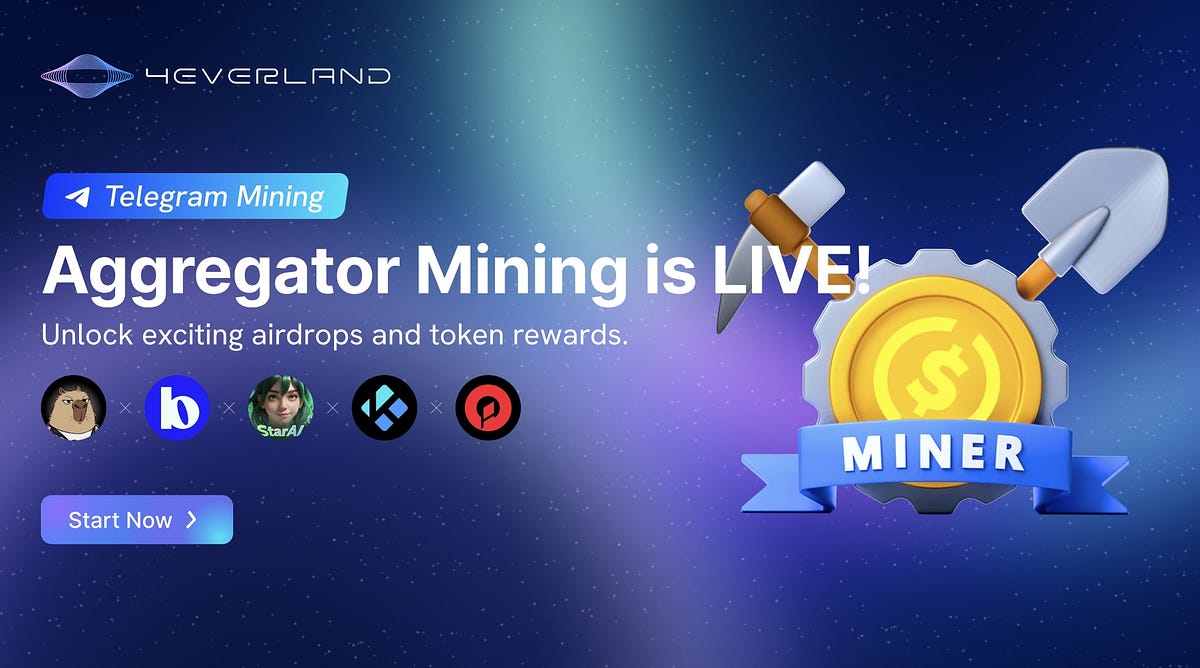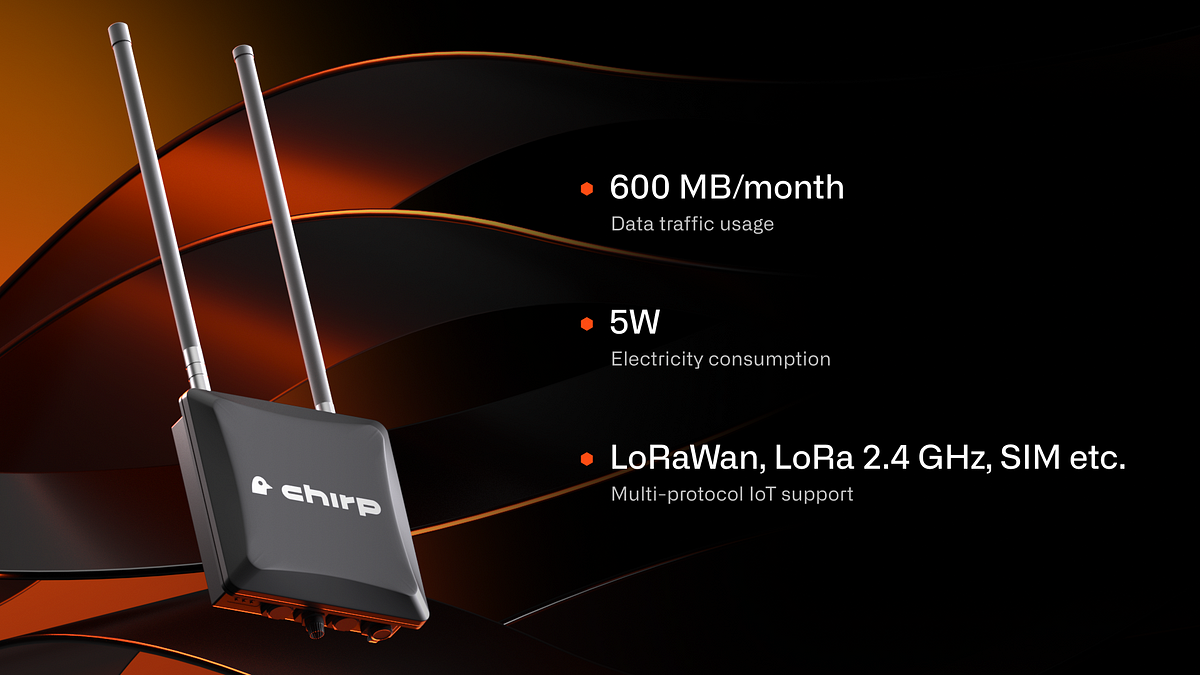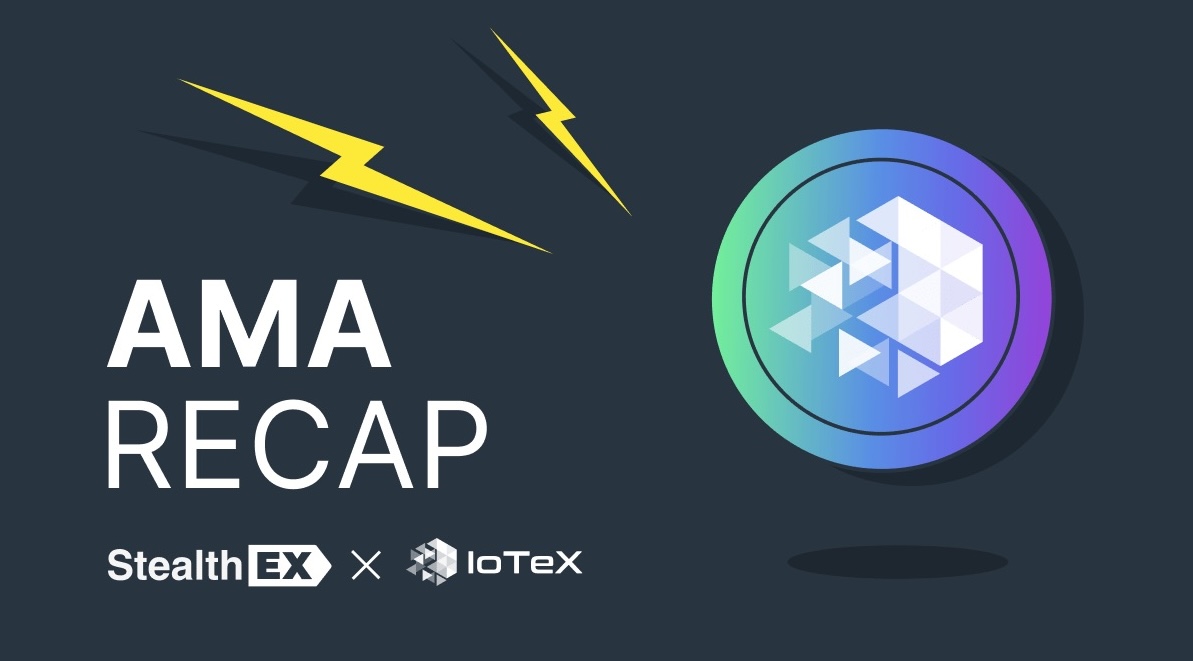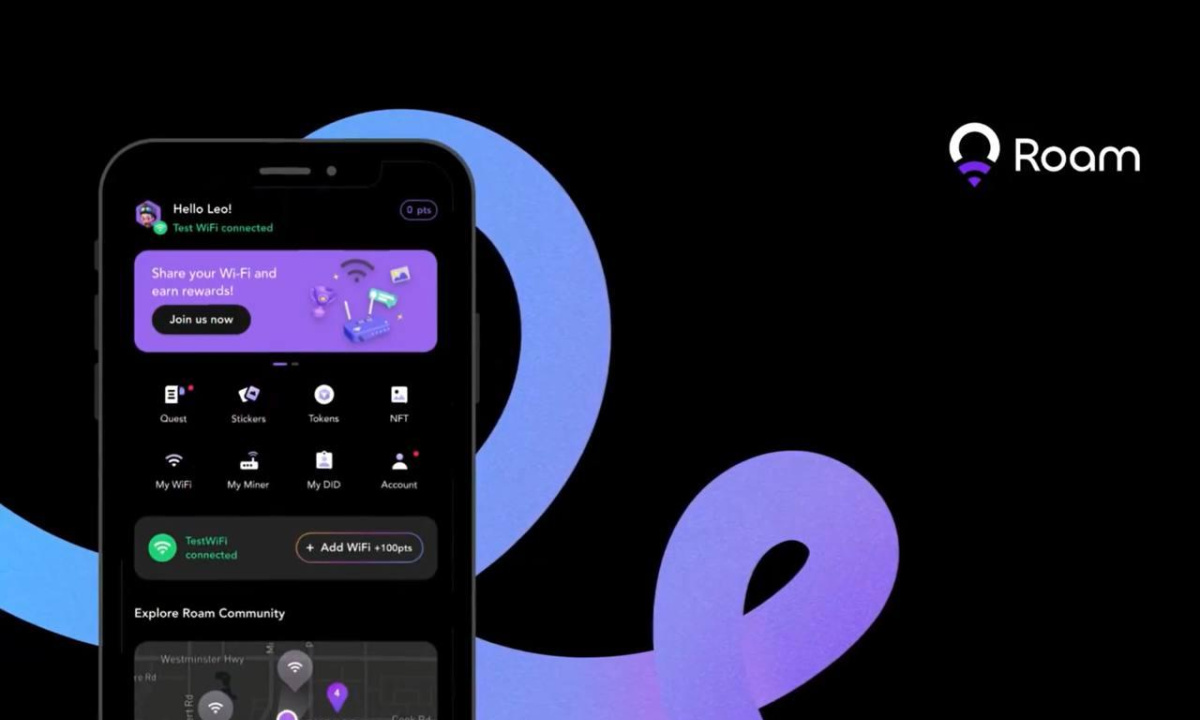Latest DePIN Mining News
View Mining Projects
a month ago
Blockmate Ventures Expands Bitcoin Treasury and Mining Operations
Blockmate Ventures Inc. has announced a significant expansion of its Bitcoin treasury division with the acquisition of an additional Bitcoin, bringing its total holdings to three. This acquisition was funded from the company's existing cash reserves, highlighting Blockmate's strategic belief in Bitcoin as a vital asset for companies aiming to preserve value and manage risks. The company anticipates that as Bitcoin prices fluctuate, its subsidiaries could enhance profitability by leveraging their capital more effectively, particularly in a rapidly changing market.
In addition to its treasury expansion, Blockmate's subsidiary, Blockmate Mining, is making strides towards launching its mining operations. The company has secured a site in Wyoming with a capacity of 200 MW, suitable for either AI or Bitcoin mining. Currently, negotiations are underway to secure low-cost power and infrastructure, as well as potential partnerships for the site. Furthermore, Blockmate is reviewing additional sites for future mining operations, with updates expected to be shared via the TSX Venture Exchange.
Meanwhile, Hivello, another venture under Blockmate, continues to lead in the decentralized physical infrastructure networks (DePIN) sector. The platform has made significant progress by listing its $HVLO token on the BingX exchange, enhancing its liquidity and fiat on-ramps. Hivello has integrated 11 DePIN protocols and has successfully removed over 19 million $HVLO tokens from circulation through a buy-and-burn strategy. With a growing user base and the ability to earn passive income, Hivello is well-positioned in a market that currently boasts a $14 billion cap, further solidifying Blockmate's diverse portfolio in the blockchain and Web3 space.

5 months ago
Xtella.AI dNFT Premint Now Live on IoTeX Chain! 🚀
Xtella.AI dNFT Premint Now Live on IoTeX Chain! 🚀
🎉Great news, Airdrop Hunters! The [Xtella.AI](https://xtella.ai/) dNFT Premint has officially launched on the IoTeX Chain! 🎉 This is your golden chance to join with zero cost, win big rewards, earn passive income, and power the AI+DePIN ecosystem!
💥Jump In Now:
Zero-Cost Entry: Just a small Gas Fee gets you a Premint dNFT, ready to mine instantly!
Lucrative Rewards: Boost Weight with tasks, stake for $XP, and score 100,000 $XP + 250 $IOTX when Grabbed.
Passive Income: Auto-stake to stack yields and mine XPIN long-term.
Community Boost: Invite 1 friend to Grab and earn 1250 $IOTX—rewards keep rolling in!
💡More details: [https://xpinnetwork.medium.com/331400b057f8](https://xpinnetwork.medium.com/331400b057f8)
💎Head to xtella.ai, connect your wallet, and Premint NOW! Slots are limited, and early birds snag the biggest gains!
Act fast! 🚀

a year ago
Decentralized Edge AI Platform Network3 to Launch $N3 Token Trading
Decentralized Edge AI Platform Network3 to Launch $N3 Token Trading on Bybit, Gate.io, and BingX
According to official sources, the decentralized Edge AI infrastructure platform Network3 will simultaneously launch spot trading of the token $N3 on Bybit, Gate.io, and BingX exchanges on January 22, 2025, at 8:00 (UTC). This milestone event signifies a crucial step for Network3 in realizing the value of user Edge Data and computing power, injecting strong momentum into the ecosystem's development and expansion.
Network3 is currently conducting a Pre-TGE airdrop activity, rewarding the community with 50 million tokens. Users simply need to log in to the official Network3 website and complete specified tasks to receive a free airdrop quota worth 40,000 points, which can be exchanged for $N3 after TGE. Additionally, the activity offers NFT acceleration cards to help users enhance node mining efficiency.
In July 23, 2024, Network3 successfully completed a $5.5 million pre-seed & seed round of financing, with investors including Borderless, EV3 Labs, loTeX, SNZ, Bing Ventures, Waterdrip Capital, Web3Port Foundation, and other well-known venture capital institutions.

a year ago
4EVERLAND Launches Innovative Aggregated Mining Feature
4EVERLAND has officially launched its Aggregated Mining feature, which allows users to engage in barrier-free mining through the 4EVERLAND TG MiniApp. This innovative functionality connects users with various projects within the 4EVERLAND ecosystem, enabling them to earn airdrops and token rewards effortlessly. Aggregated Mining is designed to lower the entry barriers for participation while providing project teams with a means to enhance user engagement and incentivization. By utilizing this feature, users can maximize their earning potential and foster beneficial interactions across multiple projects.
Participating in Aggregator Mining is simple and consists of three main steps. First, users must activate the 4EVER Boost in the MiniApp, which is essential for first-time miners. Next, they can select a collaborative project and complete specific tasks, such as following social media accounts or engaging with project content. Once these tasks are completed, mining for the chosen project is automatically activated. Finally, users should log in daily to collect their mining rewards, with the option to complete additional tasks for increased output. It is crucial to claim rewards regularly, as failure to do so may pause the mining process.
To enhance earnings, users can take advantage of several tips, including activating all three core Boost modules—Storage, Compute, and Network—and staking 4EVER tokens for additional rewards. The introduction of interactive elements, such as point-stealing and strategic card purchases, adds a gamified experience to mining. 4EVERLAND has partnered with notable projects like Capybara, BitPlay, and Star AI to enrich the mining experience, making it both rewarding and engaging. Users are encouraged to explore the 4EVERLAND TG MiniApp and unlock the potential of Aggregator Mining today.

a year ago
Streamr and JDI Launch Terminal Multi-Miner for Home-Based Crypto Mining
In a significant development for home-based mining, Streamr, a decentralized real-time data network, has partnered with JDI, a leader in decentralized physical infrastructure networks (DePIN). Together, they are launching the Terminal Multi-Miner, a device that combines multi-token mining capabilities with participation in decentralized protocols. This innovative mining solution aims to provide users with a seamless way to engage with DePIN and the decentralized economy from their homes. The Terminal Multi-Miner supports various cryptocurrencies, including $DATA and $ANYONE, and features a modular design that allows for customization and efficiency in mining operations.
The upcoming Terminal T2 model, set to launch in Q1 2025, will enhance the multi-token mining experience by integrating with the Streamr Network. This model will enable users to mine $DATA while contributing to the Streamr protocol, thus simplifying their participation in the ecosystem. The Terminal Multi-Miner is designed to be user-friendly, with plug-and-play functionality that lowers technical barriers, making advanced crypto-mining technology accessible to everyday users. JDI's founder, Yiming Wang, expressed excitement about leveraging Streamr's technology to create a unique mining experience tailored for Web3 users.
Matthew Fontana, CEO of Streamr, emphasized the importance of this collaboration in advancing DePIN and decentralized data networks. By providing an accessible entry point for users to engage with the Streamr Network and other Web3 protocols, they aim to enhance the decentralization and scalability of DePIN, which is crucial for its long-term success. With JDI's proven track record in hardware manufacturing and Streamr's expertise in scalable P2P infrastructure, the Terminal Multi-Miner represents a promising step towards making decentralized physical infrastructure a mainstream reality.

a year ago
Maximizing Rewards with Optimal Placement of Blackbird Miners
The Blackbird miner is designed to thrive in high, unobstructed locations, enabling it to provide IoT coverage and connect with other miners, thereby creating a decentralized network. This network not only enhances connectivity but also increases the $CHIRP rewards for its Keepers. Recent field tests conducted in Frankfurt showcased the miner's capabilities, revealing that optimal positioning can significantly extend its range. Using a RAK field tester, the team measured the signal strength and distances, illustrating how one well-placed Blackbird can cover most of the city, with signals reaching over 70 kilometers.
Height and line of sight are crucial for maximizing the performance of Blackbird miners. The miners emit radio signals, and when positioned high and unobstructed, they can achieve impressive ranges. To encourage optimal installation, a new ping feature is being developed to reward Keepers for successful connections with other miners. This feature will allow users to monitor their miner's performance and connectivity, further incentivizing them to elevate their devices. The more connections a miner can establish, the greater the coverage and rewards, emphasizing the importance of strategic placement.
As the network evolves, the rewards for Keepers will increasingly depend on their miner's connectivity with others. Following the mainnet launch on the Sui network, the ability to connect with fellow miners will directly influence $CHIRP earnings. Therefore, positioning the Blackbird high with a clear line of sight is essential for maximizing rewards and strengthening the overall ecosystem. By working together as a community, Keepers can enhance service quality and ensure robust connectivity, ultimately benefiting everyone involved in the network.

a year ago
Understanding Helium Mining: A New Era in Wireless Connectivity
Helium mining is a pioneering mechanism that underpins the Helium network, designed to provide global wireless connectivity for Internet-of-Things (IoT) devices. By running a hotspot, miners contribute to a decentralized infrastructure known as "The People’s Network," which facilitates low-powered, long-range wireless communication. This innovative use of blockchain technology rewards participants with Helium (HNT) tokens, effectively reducing reliance on traditional telecom providers and lowering IoT connectivity costs. The Helium network, which began development in 2013 and rebranded to Nova Labs in 2022, showcases the versatility of blockchain technology, expanding its applications beyond financial transactions into real-world infrastructure.
The mining process utilizes a proof-of-coverage (PoC) consensus mechanism, which ensures that hotspots are providing legitimate wireless coverage while rewarding them with HNT tokens. Miners operate specialized hardware that functions as both a wireless gateway and a blockchain node, validating transactions and extending network coverage. This decentralized approach contrasts sharply with traditional cellular networks, which rely on large, intrusive cell towers. Helium hotspots, powered by the Low Power Wide Area Networking Protocol (LoRaWAN), enable a wide range of applications, from smart agriculture to asset tracking, highlighting the potential of decentralized physical infrastructure networks (DePINs).
The profitability of Helium mining can vary significantly based on location, competition, and the number of connected IoT devices. While urban areas may face saturation, rural locations often present profitable opportunities due to lower competition. The transition to 5G technology introduces new earning potentials but requires specialized equipment. As demand for IoT connectivity grows, so too does the potential for increased miner rewards. Despite the inherent volatility of cryptocurrency markets, the steady growth in network usage and market capitalization suggests a promising outlook for Helium mining profitability in the coming years.

a year ago
Recap of Exclusive AMA: StealthEX and IoTeX
StealthEX recently conducted an AMA session on X Spaces in collaboration with IoTeX, and we’re excited to share the highlights with you.
Recap of Exclusive AMA: StealthEX and IoTeX
Host: StealthEX – instant cryptocurrency exchange.
Guest: Giuseppe, DevRel lead at IoTeX.
Questions from Twitter:
Q1: How will IoTeX’s infrastructure specifically contribute to the advancement of AI? What role does real-time data play in training those models, and how can it impact the accuracy and capabilities of AI agents?
Giuseppe: IoTeX’s infrastructure plays a key role in advancing AI by leveraging the DePIN model, where individuals can contribute data or GPU power for AI model training. With our infrastructure, people can provide real-time data, which is essential for improving the accuracy of AI models. What makes IoTeX unique is that everything is verifiable on our Layer 1 blockchain, meaning that anyone can check the contributions and computations, ensuring that AI models are built on trusted data sources. This adds transparency and boosts the reliability of AI systems.
Q2: As IoTeX transitions into version 2.0, what new tools, protocols, or frameworks are being introduced to enhance the experience of developers building DApps on DePIN infrastructure, and how will these changes impact overall ease of use and performance for end users?
Giuseppe: IoTeX 2.0 brings all the individual components we’ve been building together into a cohesive infrastructure. This includes tools like wallets, bridges, and decentralized off-chain computation layers. The key here is modularity: developers can choose specific components that suit their project needs, making their applications easier to build and more scalable. For end users, this translates to better performance and a smoother experience since developers don’t have to reinvent the wheel and can focus on creating useful, composable DApps.
Q3: With the launch of a web wallet, version 2 was highlighted as an all-in-one DePIN asset manager. What unique features does it offer that position it above other wallets in the DePIN space?
Giuseppe: Our web wallet is unique because it’s specifically designed for DePIN assets. It serves as a hub where new DePIN projects can list their tokens, and users can trade these tokens across multiple chains like Ethereum, Binance Smart Chain, Polygon, and now Solana. We’ve built the wallet to be more than just a place for storage – it’s an entry point for DePIN projects and users to discover, interact with, and cross-trade assets. Additionally, we’re expanding its cross-chain capabilities, making it easier for people to interact with multiple ecosystems within the DePIN space.
Q4: Can you explain the features of IoTube as a cross-chain bridge facilitating asset exchanges between IoTeX and major Layer 1 and Layer 2 blockchains? How does IoTube enhance interoperability and facilitate seamless asset transfers across different blockchain networks?
Giuseppe: IoTube is our decentralized bridge that connects IoTeX with major Layer 1 and Layer 2 blockchains like Ethereum, Binance Smart Chain, Polygon, and now Solana. Its main feature is enabling seamless cross-chain asset transfers, which is critical for DePIN projects that want to expand their user base across multiple ecosystems. By bridging these chains, we ensure that projects aren’t confined to a single ecosystem but can interact with users and liquidity on other chains. We recently announced our collaboration with Solana, which is a huge step toward making IoTube one of the most interoperable bridges in the DePIN space.
Q5: Can you elaborate more on the Halo Grants initiative and its tailored support for DePIN projects at various stages of development? How do these grants foster innovation, provide professional guidance, and drive forward projects within the IoTeX network?
Giuseppe: The Halo Grants initiative has been around for a while, providing support for smaller DePIN projects that are just getting started. It’s perfect for teams of one to three people who have great ideas but need resources to get started. We also offer more support for larger projects through our Accelerator program, which helps teams scale up by offering marketing, technical, and community-building assistance. So far, we’ve seen a lot of success with projects launching their devices and tokens, and many are now preparing for their next rounds of funding. The goal of both Halo Grants and the Accelerator is to foster innovation and help these projects grow within our ecosystem.
Q6: With the introduction of decentralized governance in IoTeX 2.0, how does the platform balance governance efficiency with decentralization, and what mechanisms are in place to prevent centralization of power within the ecosystem?
Giuseppe: Decentralized governance has always been at the core of IoTeX. With IoTeX 2.0, we’ve taken this further by introducing a new DAO structure—what we’re calling the “Marshall DAO.” This DAO is designed to allocate funds and resources to DePIN projects that the community believes are promising. Governance efficiency is maintained through proposals and community voting, ensuring that power isn’t concentrated in a few hands. By enabling the community to participate in decision-making, we prevent centralization and ensure that the platform remains transparent and fair.
Live Questions
Q1: Can you explain how the modular architecture of IoTeX 2.0 supports the scalability and specialized needs of DePIN projects? How does it compare to other existing solutions in the market?
Giuseppe: The modular architecture of IoTeX 2.0 allows projects to select specific components they need, like identity protocols or off-chain computation, which increases scalability. This flexibility is key to supporting projects with unique requirements while enabling composability—where different projects using the same modules can easily collaborate. Compared to other solutions, IoTeX’s modular approach offers greater interoperability between projects, which is crucial for scalability and growth. The modularity empowers developers to build on top of other DePIN projects and make use of shared resources, something that many other ecosystems don’t offer.
Q2: Staking programs are very important for any project. Can I stake your token? Do you have any plans for a staking program?
Giuseppe: Yes, staking has been available since we launched IoTeX in 2019, and it operates on a delegated proof-of-stake (DPoS) model. You can stake your tokens via stake.iotex.io and either become a delegate or vote for other delegates. We recently introduced liquid staking and passed a proposal that allows staking to be represented as NFTs, making it even more flexible. We currently have between 110 and 120 delegates, with the top 36 responsible for block production. It’s a great way to contribute to the ecosystem and earn rewards while securing the network.
Q3: What have been the challenges this project has faced since 2019 after launch?
Giuseppe: We’ve faced numerous challenges over the years. One major challenge has been educating people about the value of combining IoT and blockchain. In the early days, it was difficult to explain our vision for DePIN, and getting people to see the benefits of decentralized machine networks took time. On the technical side, building entirely new protocols like off-chain computation layers was also a challenge. There weren’t many existing templates to follow, so we had to push boundaries and innovate. Persistence and constant iteration have been our main strategies for overcoming these challenges.
Q4: After all these challenges, what has been your strategy for overcoming them and moving the project forward?
Giuseppe: The strategy depends on the challenge. For product-related challenges, we focus on market fit and user research, iterating as needed until we get it right. For narrative challenges, where people don’t yet see the value of what we’re building, we keep pushing forward with our vision until the market catches up. Each challenge has its own unique strategy, but persistence and the willingness to adapt are key.
StealthEX: Thank you all for joining today!
Recap of Exclusive AMA: StealthEX and IoTeX
You can swap IoTeX (IOTX) crypto on StealthEX exchange platform.
How to Buy IoTeX Coin?
Just go to StealthEX and follow these easy steps:
Choose the pair and the amount for your exchange. For example, ETH to IOTX coin.
Press the “Start exchange” button.
Provide the recipient address to which the coins will be transferred.
Move your cryptocurrency for the exchange.
Receive your coins!
Follow us on Medium, Twitter, Telegram, YouTube, and Publish0x to stay updated about the latest news on StealthEX.io and the rest of the crypto world.

a year ago
Roam Unveils $ROAM Token Airdrop and Innovative Miner Features
Roam announces a 20 million $ROAM token airdrop for users with miners and NFTs before the Token Generation Event. The Roam Rainier MAX60 router integrates Wi-Fi 6 and Web3 features, offering high performance and stability. Users can earn Roam Points through network contributions and convert them into $ROAM tokens post TGE. The unique burn mechanism increases token value and rarity. Roam miners provide efficient mining performance, dual mining support, and airdrop rewards from partner projects. Roam will participate in Korea Blockchain Week 2024, with the co-founder delivering a keynote speech on global WiFi roaming.

a year ago
PowerPod Collaborates with Mamotor to Launch a DePIN NFT on IoTeX Chain
PowerPod, the first DePIN NFT with with real-world benefits launched in collaboration with Mamotor electric motorcycle company in Macau, was sold out on the IoTeX chain within hours. This NFT allows holders to earn $PT tokens based on the daily electricity consumption at Mamotor's electric motorcycle charging stations in Macau for a 30-day period. PowerPod, initiated by IoTeX, aims to build a decentralized energy sharing network, with the charging scenario for new energy vehicles being its first successful implementation.
By utilizing the DePIN model, PowerPod seeks to accelerate the coverage of new energy infrastructure, improve resource utilization, and reduce carbon emissions through device sharing and resource interoperability. IoTeX, as a leader in DePIN infrastructure, has provided early and comprehensive support to PowerPod in terms of engineering, technology, and resources to accelerate its development. Energy, especially new energy infrastructure, is one of IoTeX's key focus areas and a significant value proposition for DePIN.
IoTeX will continue to support innovative DePIN projects through its modular infrastructure platform and DePIN Surf accelerator, driving DePIN towards a era of widespread adoption.
Signup for latest DePIN news and updates